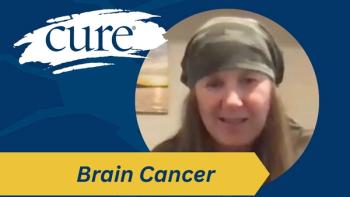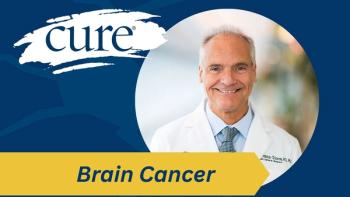
Changing the Face of Brain Cancer, One Patient at a Time
With dedication to research and advocacy, the National Brain Tumor Society is making strides in treatment of brain cancer.
With a modus operandi of “awareness for awareness sake means nothing,” the National Brain Tumor Society seeks to enhance the lives of patients with brain cancer and further the research going into the malignancy.
David Arons, CEO of the National Brain Tumor Society says the goals of the National Brain Tumor Society include encouraging people to become a brain tumor advocate, encouraging members of Congress to support policies that would benefit patients with brain cancer, attending fundraisers and most importantly, to volunteer where opportunities are available.
“While ‘awareness’ can be a powerful tool in achieving some of our other programmatic goals — for example in terms of raising the profile of this disease and its patient population to help advocate for more federal funding for brain tumor research – we see it as secondary to activities that involve taking action,” says Arons.
With simple awareness sidelined for the National Brain Tumor Society, Arons says some actions being taken by the society include public policy advocacy and legislative agendas. These efforts seek to give patients their say with policymakers in Washington D.C. on issues such as funding for the National Institutes of Health, medical research funding programs of the Department of Defense and advocating for oral chemotherapy parity laws such as the Cancer Drug Coverage Parity Act.
The National Brain Tumor Society is also helping to make strides in the treatment of the malignancy by funding research. Most recently, the society played a role in funding early research for the PVS-RIPO oncolytic virus, CMV-based vaccines, Tocagen’s Toca 511, the Delta 24-RGD oncolytic virus and Agenus’ Heat Shock Protein Prophage Vaccine, according to Arons.
As an example of the society’s dedication to research, one needs to look no further than the Defeat GBM Research Collaborative. The collaboration features researchers from prominent medical institutions such as MD Anderson Cancer Center, Ludwig Cancer Research at University of California San Diego, UCLA and Memorial Sloan Kettering Cancer Center, and seeks to span the drug discovery environment from basic target discovery, to biomarker development to preclinical drug screening.
Looking toward the future of research, Arons says the National Brain Tumor Society is turning its attention toward gliomas.
“Right now, we’re acutely focused on a class of malignant brain tumors that occur in children and adults know as gliomas, both low-grade and high-grade. Our funding strategy is mainly geared toward launching larger, collaborative efforts where we play a more direct stake in managing the research effort … though we do still have some more tradition open RFAs from time to time,” he said.
Outside the realm of proactivity and working with medical professionals to change the paradigm of brain cancer, the National Brain Tumor Society offers patients, caregivers and families a venue to tell their stories and meet others going through similar situations. The society offers free information about managing side effects, finding support, understanding their tumors and even facts about brain cancer.
Arons adds that all the support offered by the National Brain Tumor Society is free, save for “higher-end galas and events,” which carry with them the price of travel.
“Also anyone can come to one of our Brain Tumor Walks, races, and rides, but fundraising is encouraged at those to help us fund our programs,” he said.




